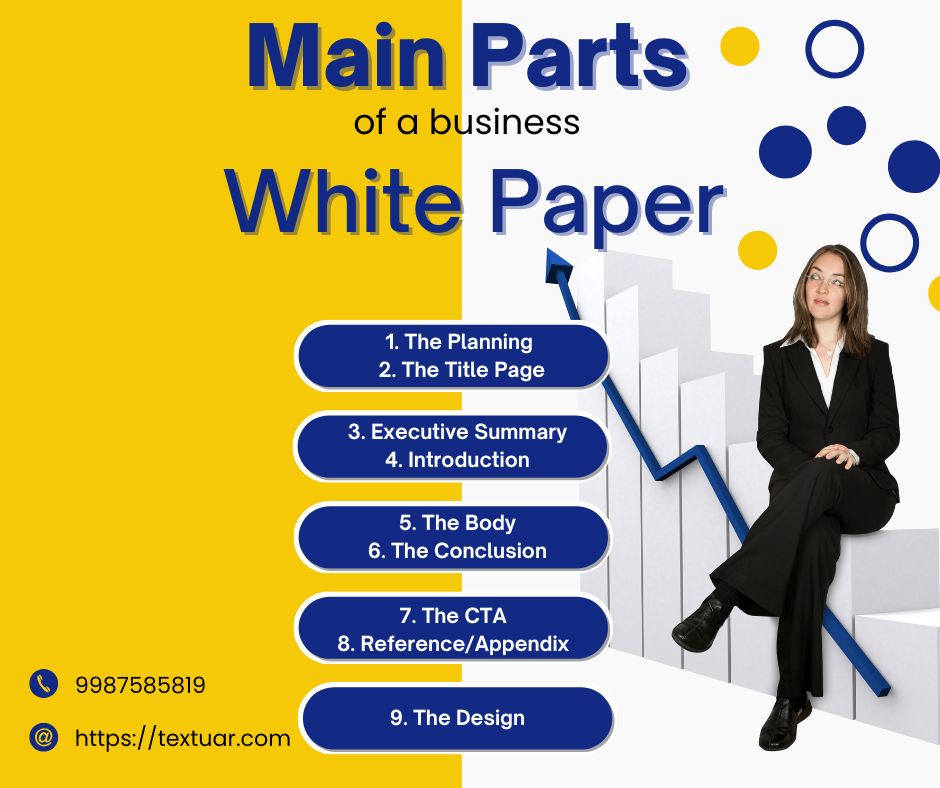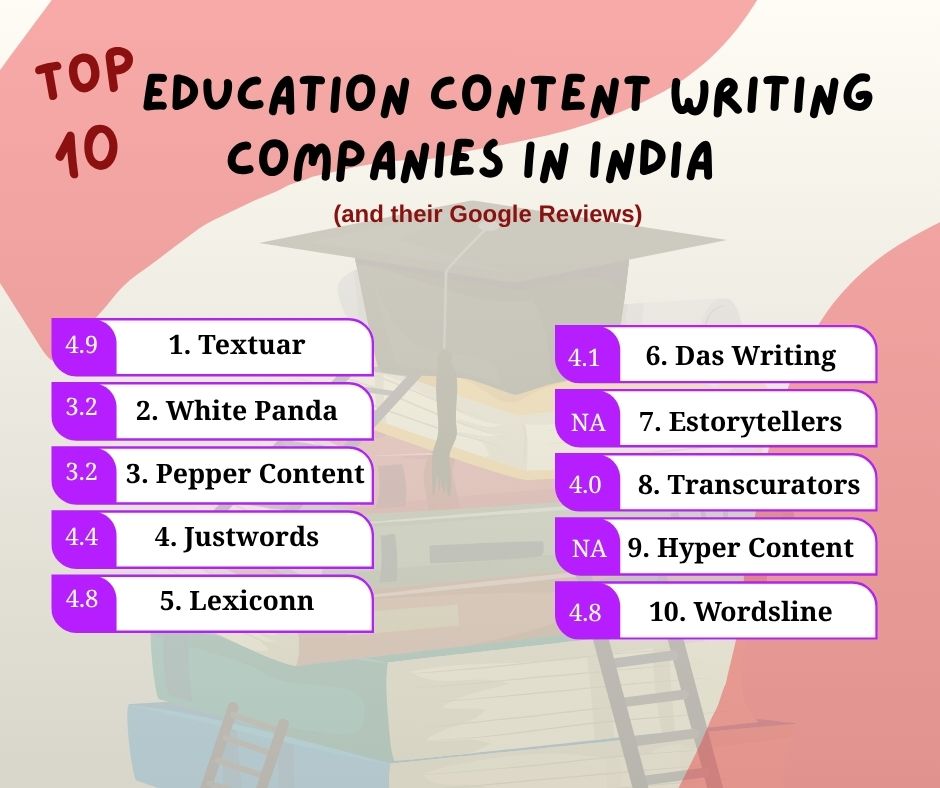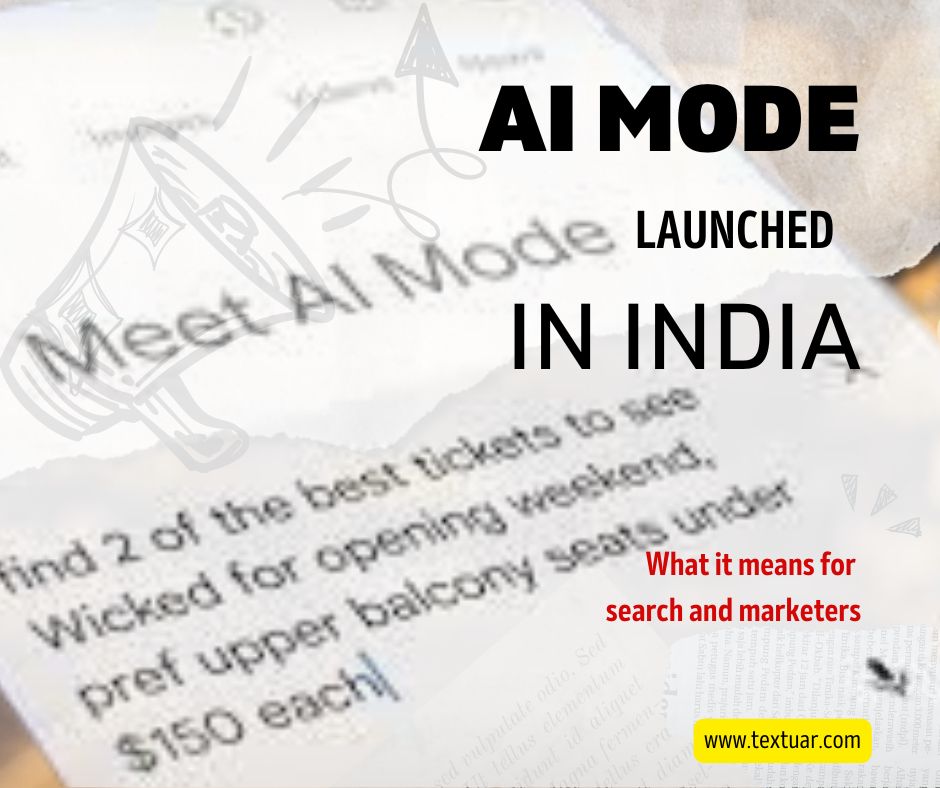📌 TL;DR – Quick Summary
A successful business whitepaper is a strategic lead generation content asset. This guide breaks down its essential parts: a compelling title, an executive summary for busy readers, a data-driven body that builds authority, and a strategic call to action. Also we see why Textuar is the preferred white paper writing company for your brand amplification needs.
Most marketers would agree that attention is the most valuable currency right now over the Internet. Readers don’t spend more than some minutes on content. Yet, there is one marketing and authority asset that shines the brightest when it comes to showing your dominance in a niche, seeking high-quality audience attention and encouraging informed actions – business white papers.
It demonstrates a company’s deep industry exposure and how it can be well positioned to solve complex problems.
But a poorly constructed white paper is just a long PDF that gets lost in a random folder.
A truly effective white paper is a strategic tool that bridges the gap between a prospect’s problem and your solution.
So, what separates the memorable from the mediocre?
Let’s break down the essential components your business white paper must include to captivate, convince, and convert.
1. The Planning Before White Paper Writing
Before you write, you need to set the strategy. For this, first answer these three crucial questions:
- Who is this for?
Create a clear picture of your perfect reader.
– Is it a CTO worried about their cybersecurity infrastructure
– Will it be a director of marketing trying to get better ROI?
– Is it the finance manager who’s looking at regulatory compliance solutions?
Your entire approach will be determined by their struggles, proficiencies and objectives.
- What is the core objective?
– Do you need it for driving leads
– Is it for supporting a sales team
– Will it help in establishing thought leadership for your management executive?
Your purpose will determine the paper’s style, tone, and perhaps most importantly, call to action.
- What is the key takeaway?
After reading, what is the one thing you want the reader to take away
– A deeper understanding of a complex problem
– Is it a data-backed framework or methodology you want them to know about?
– You might need to provide validation for a future decision where they are convinced of your capabilities and engage you for doing business.
All sections of your white paper should reinforce this primary message.
Now that we’ve set the groundwork, you can start building your document.
2. The Title Page
You never get a second chance to make a first impression. This tells a lot about the title page. It is the white paper’s handshake. It needs to be professional, visually in line with your branding and immediately communicate the value.
- Title: Make it captivating and benefit-rich: Include a clear, descriptive headline or a compelling problem/solution approach (ex. “Beyond Firewalls- A New Zero-Trust Paradigm for Cybersecurity” or “The ROI of Content Marketing- How Textuar Improves Content Efficiencies at Scale”).
- Sub Title (optional): Use this to explain the theme, or complement the heading.
- Company Logo & Date: Builds trust and displays the information is up to date.
- Author Name(s) and Title: Including a reputable expert or thought leader from your organization also adds authority.
3. The Abstract/Executive Summary
This section is a hook for the content. It is really all that the busy executive will read. Your summary will have to advertise the full paper.
- Statement of the Problem: Describe the industry challenge or pain point briefly.
- Indicate the Solution: Sketch out how the white paper will solve the problem.
- The value promise: Tell them exactly what they’ll get out of dedicating their time to you. What central idea or organizing framework will they leave with?
4. Introduction
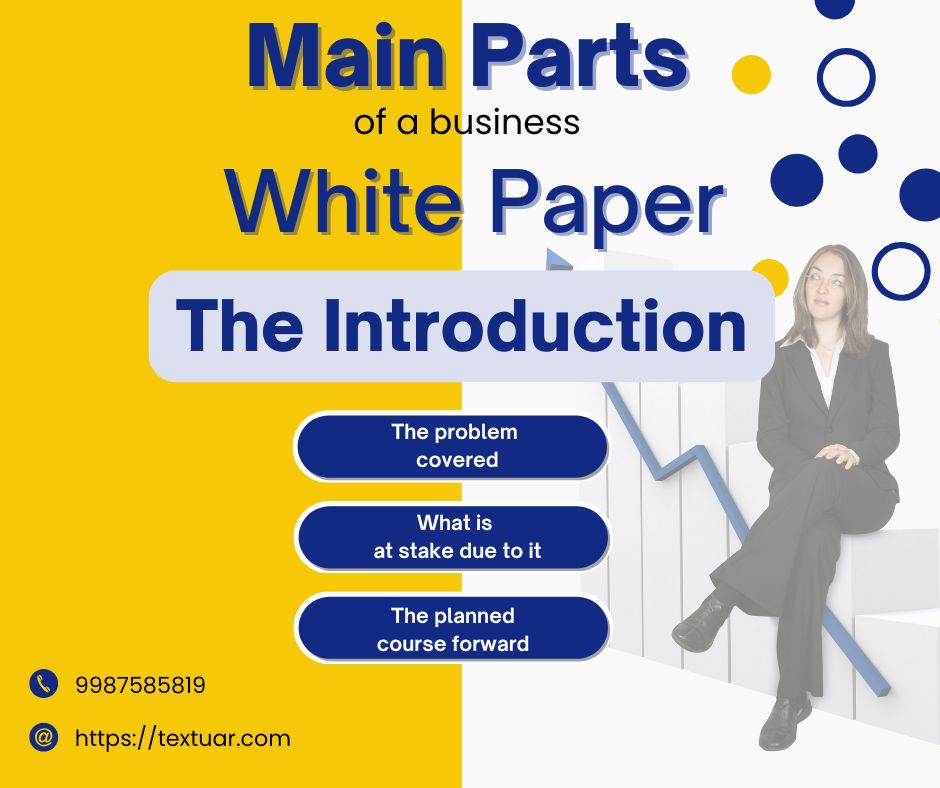
Here, you are elaborating on the abstract, making a case for why readers should care.
- The Problem, in Perspective: Read more about the challenge. Make it tangible by starting with a startling statistic or a relatable anecdote in the industry.
- The Stakes: What happens if we don’t do anything about the problem? Describe the issue in terms of lost revenue, security risk, competitive weakness or process inefficiency.
- The Planned Course Forward: Present your white paper’s thesis—what it is that you will be attempting to prove.
This is where you talk about the need for something new like a tool, technology or frame work (Your company will provide it).
Key point: This is not the place to sell your product, but rather the idea.
5. The Body
This is the heart of your white paper where you fulfill the promise with research, logic, and data.
a. Background and Context
The right amount of industry context will set the tone for the body.
– How did we get here?
– What is lacking in the currently available alternatives?
– Why are the present solutions falling short?
b. Break it Up for Better White Paper Writing
Dive in with subheads. This way, you can cover your main challenge and slice it up into bite sized chunks.
For instance, if you were creating a white paper on content marketing, it might include sections for
-“Lack of Time in Creating Content,”
-“Intensive Plagiarism Check,” and
-“Writing as per Target Audience”
…as the common problems to hire an expert for content.
c. Prove and Disseminate Your Research and Data
This is where your content asset gets its name “White paper” by giving it authority. Here, you can include:
– Original Research: Surveys, data studies or case studies of your own company.
– 3rd-party Data: Numbers or data from a trustworthy source such as Gartner, Forrester, or .edu sites.
– Use Cases and Examples: Use real-world use-cases (they can be kept anonymous) to prove your point.
d. Present Your Method/Solution
Here’s where you smoothly present your approach or technology as the natural solution to the issues you’ve described before.
So introduce it as a better way. Many white paper writers explain how it works using diagrams, flow charts or walking through step-by-step.
The tone is, “According to the data provided, an effective solution will have these key features…”
Here is a quick recap of what will come in the body in white paper writing.
| Component | Purpose | Key Activities & Examples |
| Background & Context | To provide the necessary industry foundation and set the stage for your argument. | Explain how the industry reached its current state. Analyze why existing solutions are insufficient or failing. |
| Problem Breakdown | To make the complex challenge digestible and thoroughly explored. | Use subheadings to dissect the main problem into smaller parts (e.g., Lack of Real-Time Visibility, Inefficient Processes). |
| Research & Data | To add authority and credibility to your claims, validating the problem and your expertise. | Present original research (surveys, case studies), third-party data (from firms like Gartner), and real-world use cases. |
| Framework/Solution | To logically introduce your methodology or technology as the answer to the problems outlined. | Present your solution objectively. Use diagrams and step-by-step guides to explain how it works and its key features. |
6. The White Paper Conclusion
Your conclusion is your chance to have the last word on the subject.
- Sum up the Main Points: Repeat (paraphrase) the most important information and evidence presented in the body.
- Confidently Restate the Thesis: Clearly reaffirm your main standpoint. It will now be supported by the evidence you have presented.
- The End Result: Lead the reader to a strong conclusion about the future of the industry and why they should change their ways.
7. The CTA in White Paper Writing
A white paper without a solid CTA is a wasted opportunity. This is not the place for a hard sell but a time to pique interest.
a. Put your CTA in a Natural and Value-Driven context
Your call to action should be a logical next step for an informed reader who buys into your thesis.
Rather than: “Get our product right now!”
Try: “Schedule a demo to see how our framework can be applied to your unique challenges,” or “Download our free ROI calculator to model potential savings,” or Visit blog for more insights on [related topic].”
b. Make it Easy
Include clear contact information ‐‐ a link, QR code or email address of a specific department (i.e. hanif@textuar.com).
8. References and Appendices: Bolstering Credibility
The act of formally citing sources helps a white paper writer avoid outright plagiarism. It also signals that the author has taken an interest in doing due diligence and assuming the reader is intelligent.
Include citations for every piece of data, quote and third party study.
Appendices should be used for information and descriptions that are detailed or too long so for placement in the main text, such as survey data or technical specifications.
9. Design to Go Beyond the Words
You can’t just slap a wall of text out there and expect a professional to read it. Try to add visual elements to improve readability and message comprehension.
| Design Principle | Purpose | Key Implementation |
| Professional Design | To ensure the document is taken seriously and is inviting to read. | Avoid “walls of text.” Invest in a polished, clean layout for the final PDF. |
| Brand Consistency | To reinforce brand recognition and project a cohesive, professional image. | Use your company’s official colors, fonts, and logo throughout the document. |
| Visual Hierarchy | To make the content easily scannable and guide the reader through the argument. | Use headings, subheadings, bullet points, and bold text to structure information. |
| Data Visualization | To simplify complex information and make data engaging and memorable. | Convert statistics and lengthy numerical explanations into charts, graphs, and infographics. |
| Whitespace | To reduce cognitive load, improve readability, and create a less intimidating document. | Use ample margins and spacing between lines, paragraphs, and sections. |
| Professional Formatting | To deliver a final product that looks authoritative and is easy to distribute. | Export a high-quality, print-ready PDF that maintains all design elements. |
Why Textuar is the Best Choice For White Paper Writing
By now you would have realized that white paper writing is integral to a great user experience. But when you sit down to draft it, you would know the intense effort and time needed to create the final draft.
Here, you can ensure that your white paper get created without diverting your effort from your daily work – by engaging with white paper writers.
This is where Textuar comes across as the right choice of white paper writing company.
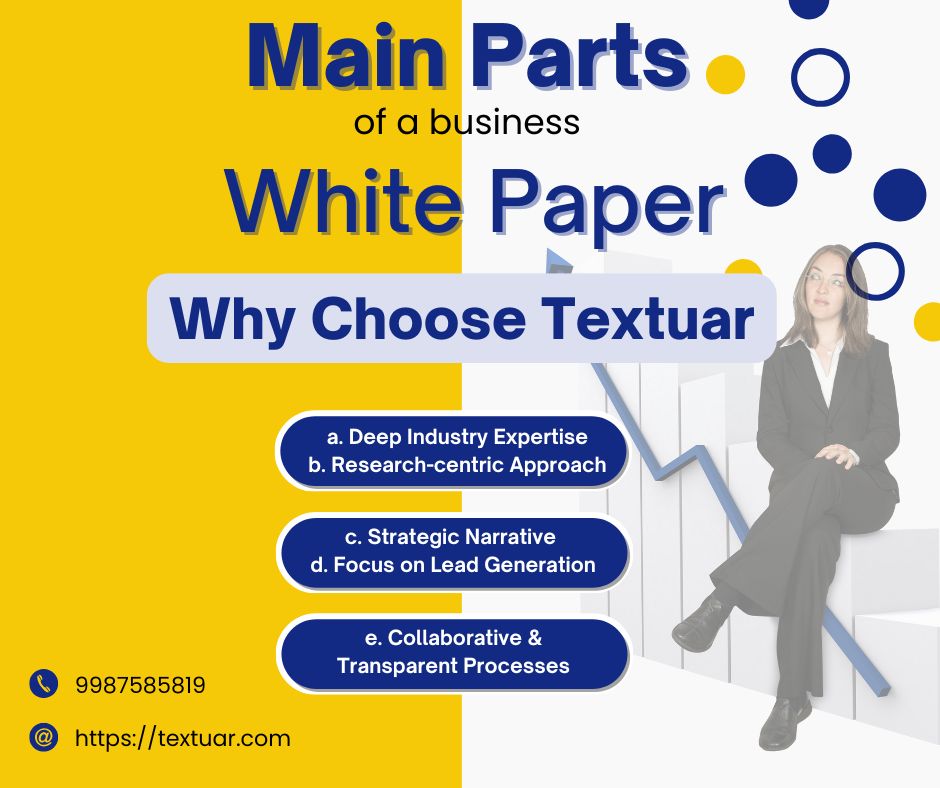
We assist clients by turning intricate thoughts into compelling and lead-generating assets. Our copywriters blend expert storytelling skills with strategic insight to create whitepapers that will portray your company as an authority and engage its intended audiences. The result will be visible marketing ROI for your organization.
Here are some reasons to select us.
1- Deep Industry Expertise
With their experience in vital B2B sectors, our writers are able to write accurately and in a style that will align with a sophisticated audience of C-level officers.
2- Research-centric Approach
We base our narrative on reliable data sets and reputable references. Hence, we make your brand come across as imposingly authoritative – a vital asset for any successful white paper.
3- Strategic Narrative in White Paper Writing
We turn dry topics into narratives that carry the reader from problem to solution. In parallel, we maintain commitment and reinforce your core message.
4- Focus on Lead Generation
Every white paper is consciously designed with a way to generate high-value leads and support your sales funnel.
5- Collaborative Processes when Writing White Paper
We work closely with your team to achieve smooth communication and finalize your brand voice and business objectives from beginning to end.
Final Thought: The White paper as a Conversation Starter
Your white paper is not the end of a journey, it is the beginning. It puts your sales team in a superb position expensive consultants could not have given them, while providing marketers with a powerful nurturing tool for leads. Most important, it delivers real value.
By investing in a well-researched, strategically sound and professionally presented white paper, you are not just selling a product – you are selling knowledge, authority and trust.
Such content assets will emerge as the most powerful currencies of all.
Hire Textuar to amplify your brand authority with white paper writing.
White Paper Writing Frequently Asked Questions (FAQs)
Q1: How long should a business white paper be?
A strong white paper is usually 3,000 to 5,000 words (6-12 pages). Length should be determined by the depth of the subject and the amount of data to support it rather than an arbitrary number of words. It should be long enough that readers can learn about the topic thoroughly through reading this single document and verify other claims or arguments they make independently.
Q2: What’s the main difference between a white paper, an ebook, and a case study?
An ebook is both an overview and a teaching tool; case studies are about actual customer success stories that can be widely used by most readers, but a white paper is something completely different than these other two types of documents. It uses persuasive evidence to make a strong statement on whatever problem a company wants to persuade others of and not just any kind of facts or opinions.
Q3: How promotional can I be in a white paper?
A white paper is only 10-20% marketing. Its main function should be to teach and earn trust. Promotions are provided by backing your solution with evidence, demonstrating it is the logical answer to the problem-not empty sales language.
Q4: How do I measure the success of a white paper?
Keep an eye on key metrics such as the number of times it is downloaded, the lead conversion rate, the quality of leads generated (e.g. Marketing Qualified Leads. and also discourse from your sales team who will be telling you just how useful they found it to talk over with clients).

